The Mayflower ‘pilgrims’ are traditionally depicted wearing black with white collars and cuffs, tall black hats and white bonnets. But it is unlikely that the Dorking ‘pilgrims’ wore black. Though they were probably ‘puritan’ in outlook, in the 1600s the term did not mean that they were sober living or sombrely dressed; it meant that they believed in the purity of the Bible. Black dye was expensive; it was only worn by the wealthy and for ‘best’.
England was renowned for its wool and most everyday outerwear was made of woollen products. Poorer people wore ‘russet’ – coarse, undyed woollen garments. The clothes of the more prosperous were finer and coloured with vegetable and lichen-based dyes which resulted in more muted colours than those produced by today’s synthetic dyes. Greys and browns were inexpensive, as were yellows, made from weld flowers or onion skins, and reddish browns made from madder flowers or beetroot. Green and blue came from rarer plants and were more expensive.
In the early 1600s, men wore doublets and breeches and women wore laced corset tops, layers of petticoats and woollen outer skirts. Underneath, men wore linen shirts and women sun-bleached linen ‘shifts’ both of which doubled as nightwear. Pants or knickers had yet to be invented. Children of both sexes wore loose shifts until the age of five or six when they were dressed in similar style to adults.
Most of the clothes worn in 17th century Dorking would have been locally made, and most of it home sewn. Women spun flax on hand spindles to make linen. Wool was cleaned by fullers, using the waters of the Pippbrook to get rid of impurities before spinning and weaving. Peter Browne, who travelled to the colony with the Mullins family, was a weaver, as were his father and brothers. Working from their homes, they produced fabrics for sale on West Street which also housed retail tailors, hatters, glovers, and at least one shoemaker.
A world without pockets
Pockets are a relatively modern invention. In the Middle Ages both men and women carried little bags either tied around their waists or suspended from their belts. These held everything from tools to food. But as towns grew crowded pickpockets were able to slice the ties and run with the bags. They became known as ‘cutpurses’. By the early 1600s people had taken to hiding their bags under layers of clothing. Men’s jackets and women’s petticoats were fitted with slits that allowed access to the little bags which were tied to petticoats or under garments.
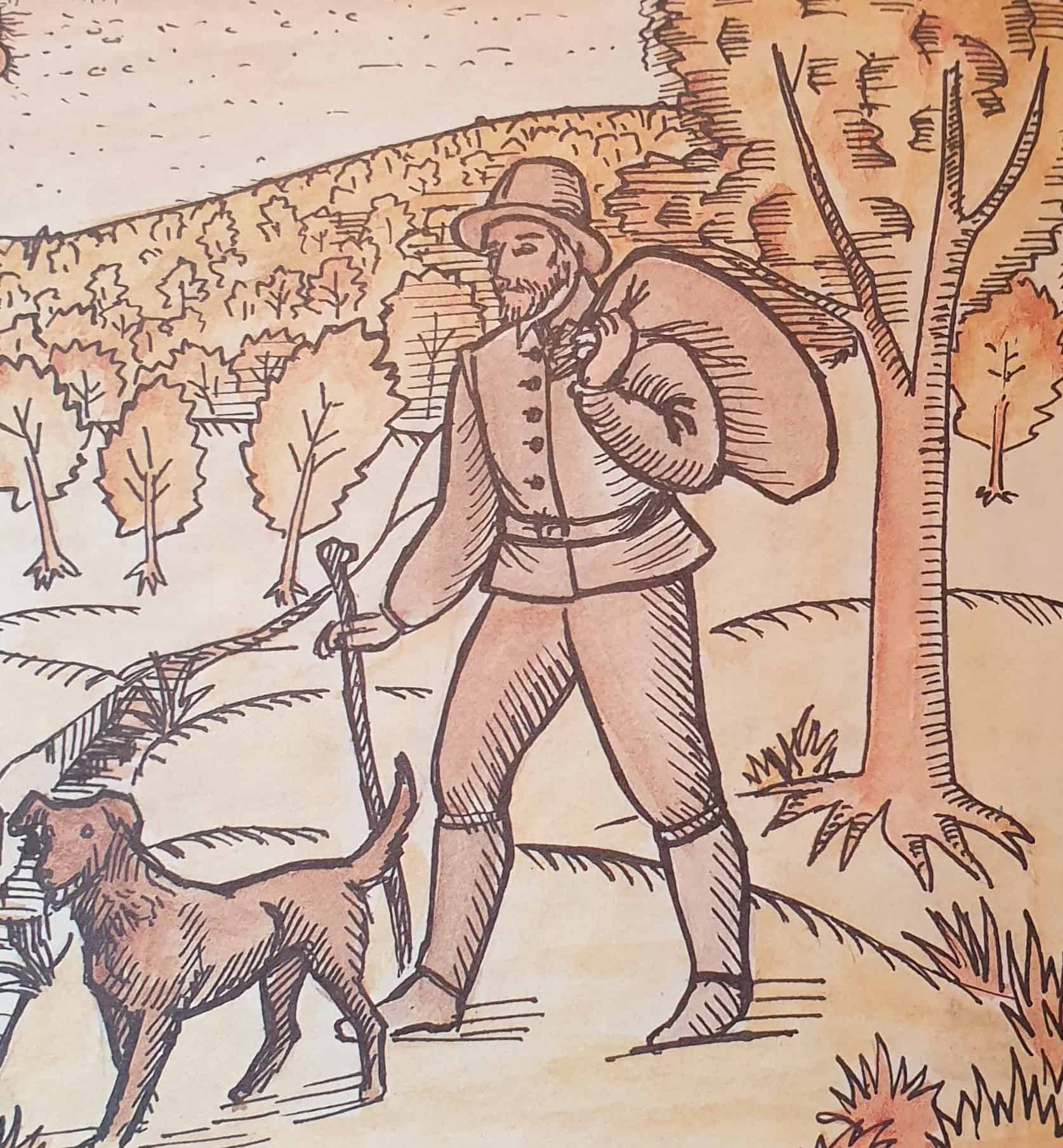
A man dressed in doublet and hose. Men and women wore stockings held up by garters and leather shoes or boots. Felt hats protected them from sun and cold.
A woman and child dressed in the style of the early 1600s. The border to the image is adapted from a wall painting that survives within the premises of Robert Dyas in the High Street.
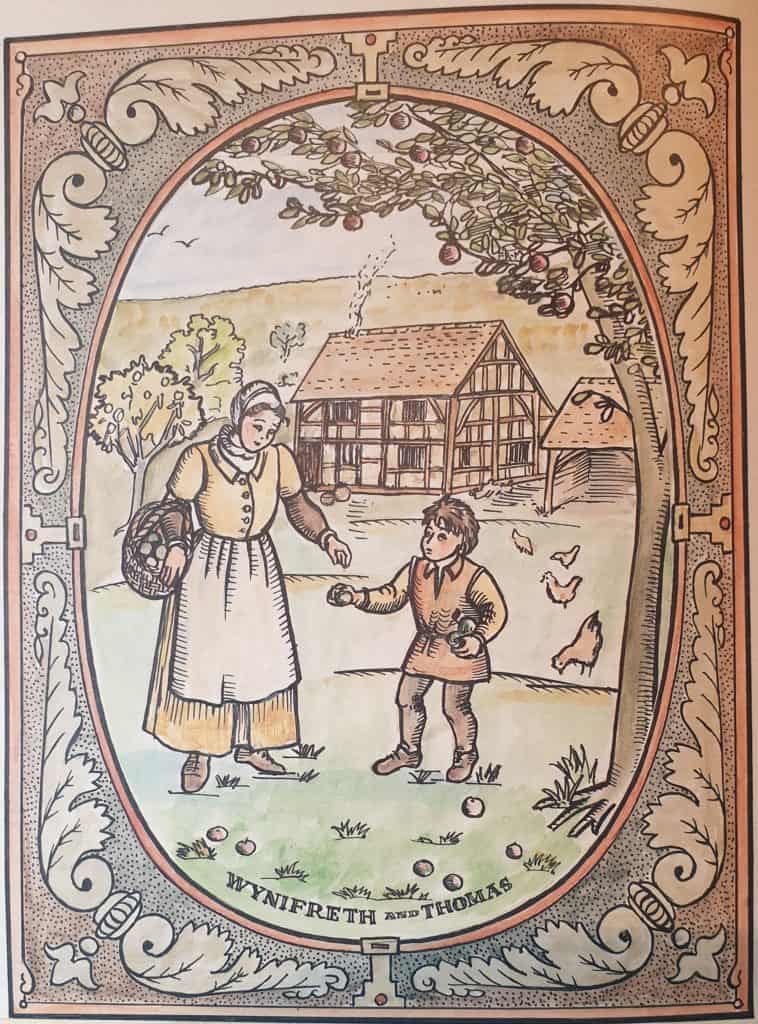
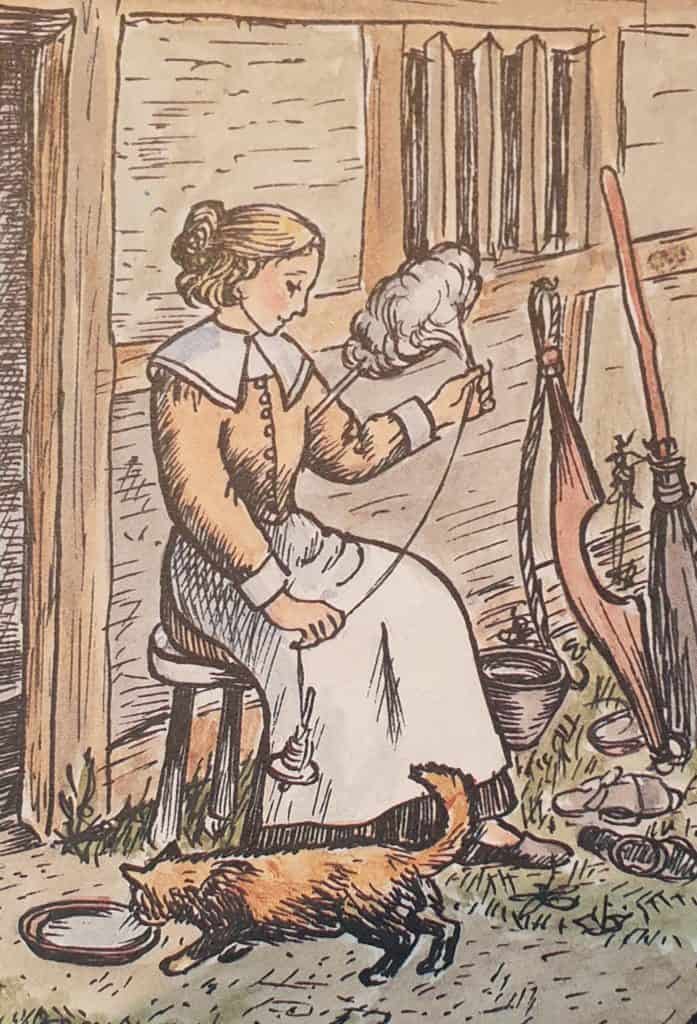
Women spun flax on portable spindles at home or whilst they were taking care of animals on the town’s nearby commons. Women’s hair was generally worn up, under bonnets and hats.
A woman dressed in in the muted colours achieved by vegetable dyes. More petticoats could be put on in cold weather and woollen skirts protected the legs from cold and kitchen fires. Women like Alice and Priscilla Mullins would have made and mended most of the clothes for their families.
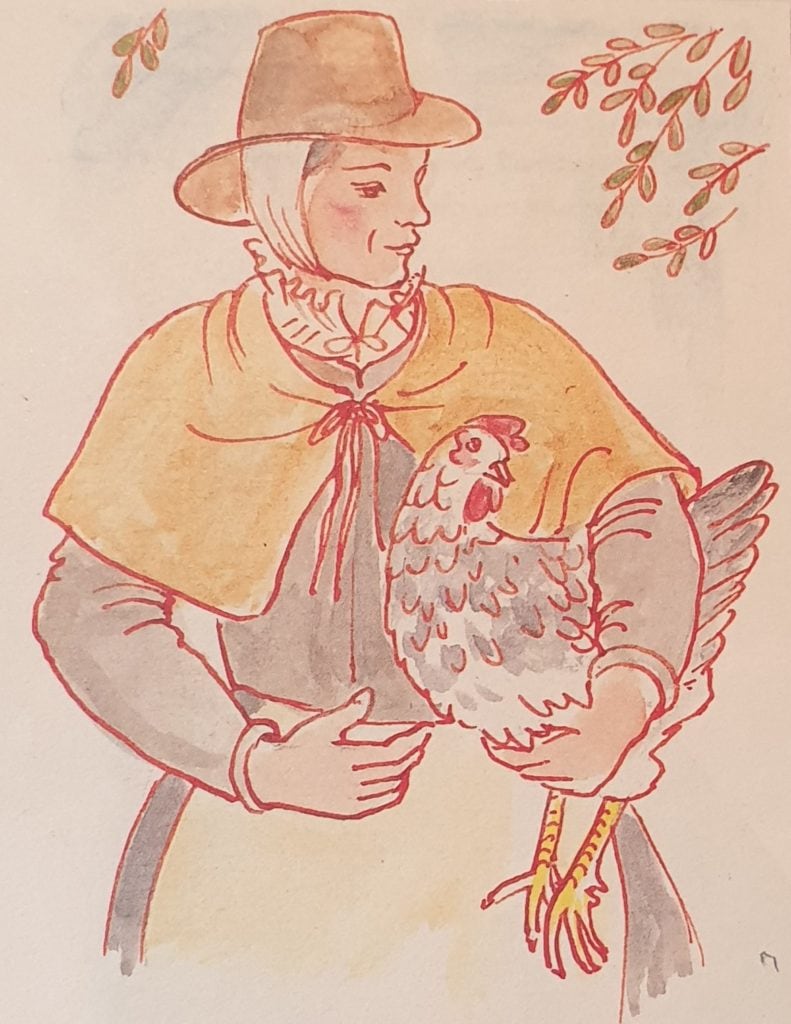
Edward Winslow (1595-1655) was the third governor of the Plimoth Colony where Priscilla Mullins lived out her life after leaving Dorking. He is depicted here wearing black and white – perhaps giving rise to the belief that this is how the Mayflower travellers typically dressed. Far from suggesting modesty, black was fashionable and expensive as it requires a lot of dye. Wearing black was a subtle way for prosperous people to advertise their status.

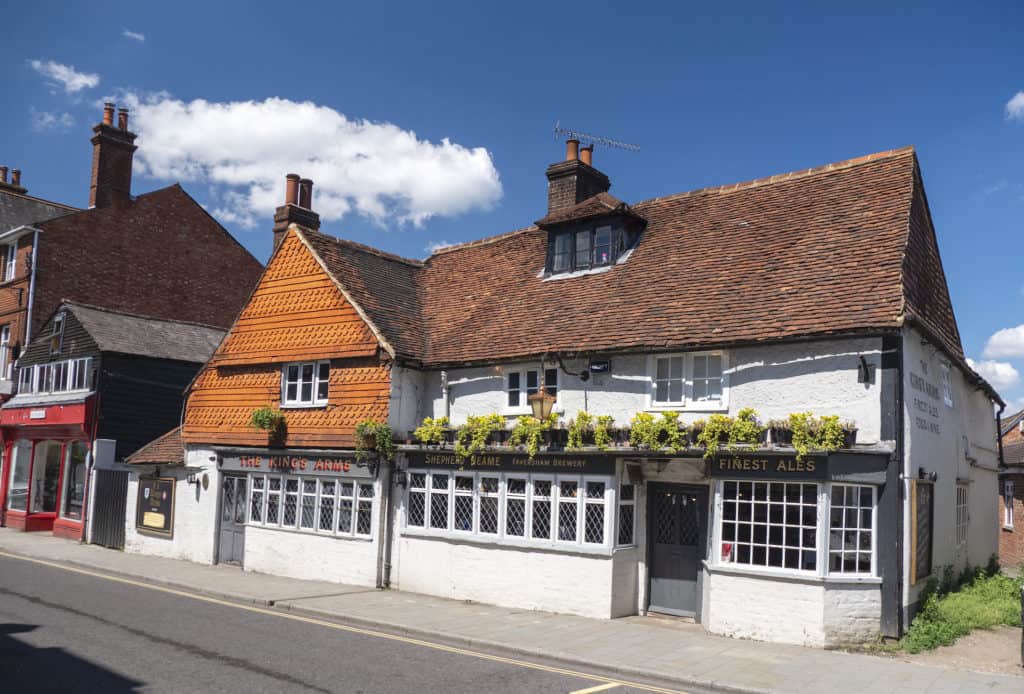
In the mid 1600s the King’s Arms on West Street, a short distance from the Mullins’ house, was a row of three cottages. It was known as Groves after a local fuller whose job it was to cleanse wool for use by beating it with an absorbent clay-like material to remove colour, impurities and oils from the raw wool.
Previously : Darking in 1620
Next : Shoes

